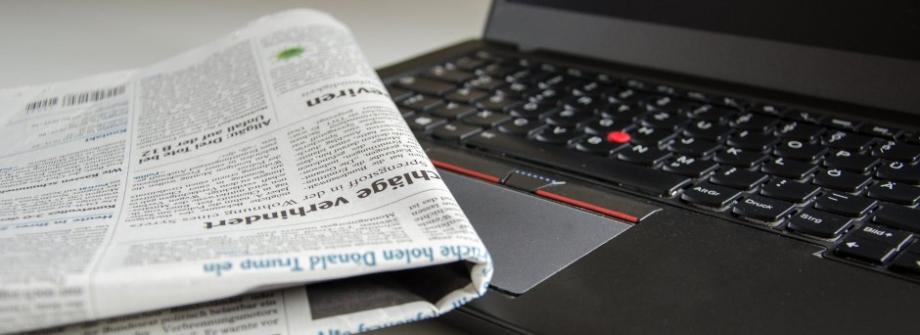
Marco Aurelio Salvino, Haematology Professor Universidade Federal da Bahia, Instituto de Ensino e Pesquisa D’or, Hospital Sao Rafael-Bahia, comments on the publication titled "Chimeric antigen receptor T-cell therapy yields similar outcomes in patients with and without cytokine release syndrome" published in Blood Advances.
Chimeric antigen receptor T-cell therapy yields similar outcomes in patients with and without cytokine release syndrome
Shakthi T. Bhaskar et al.
Blood Adv (2023) 7 (17): 4765–4772.
Let’s start by the end of the story: Bhaskar and colleagues, showed, elegantly, that in BLCL patients receiving CAR-T cell therapy the development of CRS does not affect overall survival, progression- free survival, or response rate! It means that the intensity of CRS does not help the hematologist, to predict the response.
But, does it mean that we can “close” the dilemma between CRS and tumor “attack”, with different mechanisms of action (CRS versus Tumor aggression)? In Allo BMT scenario we have lots of trials showing, for example, association of cGVHD and reduction of relapses in some specific situations. In CART scenario is it different? Does it mean that we can manage and treat more precociously, the CRS, or even prophylactic, without “suffering” anymore about this important point? Shakti et al, give us lot of good insights for these important points in the new CARTcell world (and its new questions).
CRS and CAR-T cell therapy are intimately related. There has been a concern that patients who do not experience CRS will not respond to the therapy. This is a retrospective analysis (and its limitations) that compared the outcomes of patients with advanced LBCL treated with CAR-T cell therapy who did and did not develop CRS, and with different CRS grades. It was a multicenter study that included 352 patients aged ≥18 years with aggressive LBCL who underwent apheresis between May 2018 and January 2021 for commercial CAR-T cell therapy at 8 centers in the United States.
The baseline characteristics were similar between patients with CRS and those without CRS, except for the type of product received and disease status at the time of therapy, as expected. Patients who received axi-cel developed CRS more frequently than those who received tisa-cel, but the study was not designed to evaluate the outcomes between the products. 1-3,
Relapsed disease tended to develop CRS less frequently than primary refractory disease or disease refractory to the most recent line of therapy. These observations could be explained by differences in disease burden, type of LD therapy, or elevated baseline inflammatory markers, all of which have been shown to be associated with incidence of CRS.4
Peak ferritin >5000 (that may also be correlated with higher disease burden) following cellular therapy infusion was associated with shorter PFS and OS. Ferritin may also be a marker of severity of CRS, although development of CRS did not have an impact on PFS or OS in this analysis. This is a type of question to be prospectively addressed in the future separately. This bring us a question: Would the presence of CRS in some higher risk patients reduced/anulated the potential difference between the PFS/OS in the patients that had or not, the CRS?
There was no difference in ORR or CR rates between patients who developed CRS and those who did not, even when stratified by CRS grade. 5 Even in the multivariate analysis, CRS was not associated with a difference in survival. This finding remained consistent when comparing patients with grade 1 to 2 CRS with those with grade 3 to 4 CRS. OS was similar the 3 groups, giving us a clinical confidence that having (or permitting or inducing) CRS is not, at least for the nowadays evidence, a clinical objective when treating these patients. These findings strengthen the rational that clinical CRS is not necessary for efficacy of CAR-T cell therapy, though further analysis is needed to fully evaluate this.
Another way to see this picture is also not to getting to conclusions like the CAR-T cells were not effective in patients who did not develop CRS and abandoned the period of observation in favor of alternative therapy that could damage T cells. The study brings important data contributing a lot to our understanding of the factors that influence the outcomes. The data showing that the use of steroids during CAR-T cell treatment also did not affect outcomes confers also stronger confidence (at least for now) in the use of steroids therapeutically or even prophylactically in high-risk patients.
References:
- Fried S, Avigdor A, Bielorai B, et al. Early and late hematologic toxicity following CD19 CAR-T cells. Bone Marrow Transplant. 2019;54(10):1643-1650.
- Associação Brasileira de Hematologia, Hemoterapia e Terapia Celular Consensus on genetically modified cells. III: anti-CD19 CAR-T cell therapy for patients with non-Hodgkin lymphoma. Alencar AJ, Hirayama AV, Clé DV, Salvino MA, Perini G, Arrais C, Baiocchi O, Palma LC, Colturato I, Vaz J, Chiattone R, de Lima M, Filho JS, Nabhan S, Rocha V, Guerino-Cunha RL, Chiattone CS.Hematol Transfus Cell Ther. 2021 Nov;43 Suppl 2(Suppl 2):S22-S29. doi: 10.1016/j.htct.2021.09.003.PMID: 34794792
- Meng J, Wu XQ, SunZ, et al. Efficacy and safety of CAR-T cell products axicabtagene ciloleucel, tisagenlecleucel, and lisocabtagene maraleucel for the treatment of hematologic malignancies: a systematic review and meta-analysis.Front Oncol. 2021. ;11:2699.
- GreenbaumU, Strati P, Saliba RM, et al. CRP and ferritin in addition to the EASIX score predict CAR-T–related toxicity. Blood Adv. 2021. ;5(14):2799-2806.
- Jacobs MT, Jain MD, Gao F, et al. Severity of cytokine release syndrome influences outcome after axicabtagene ciloleucel for large B cell lymphoma: Results from the US lymphoma CAR-T consortium. Clin Lymphoma Myeloma Leuk. 2022;22(10):753-759.